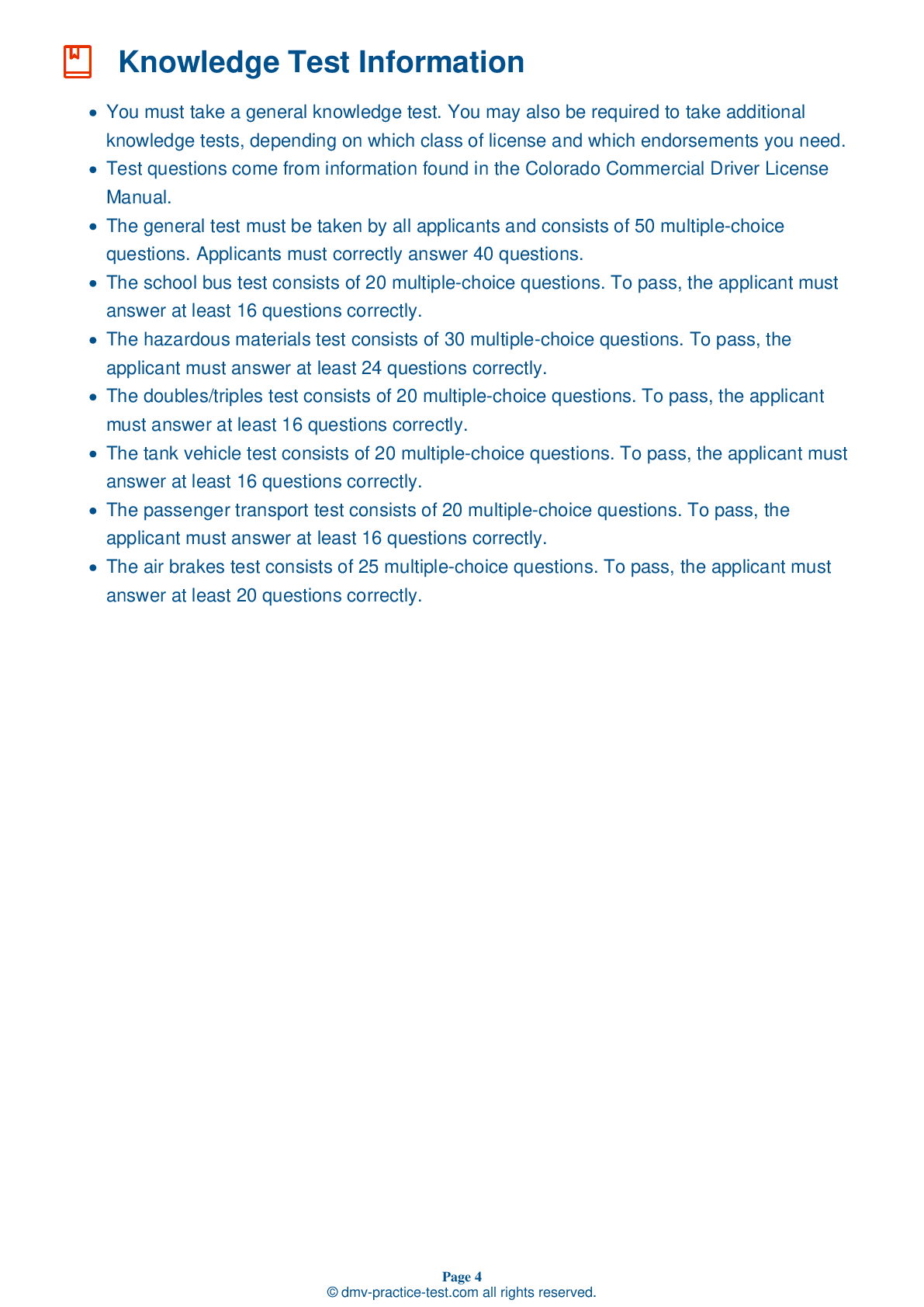Combination Vehicles Practice Test | Colorado 2026 #2 Page 2 of 3
Train for FREE online with our Colorado CDL combination vehicle test. The official exam test consists of several obligatory parts, with all of them checking your knowledge of different blocks of road rules. If you need to obtain a CO combination license in 2026, practice as much as possible. Free sample tests published on our website will help you check and improve your knowledge and boost your grades. Please bear in mind that DMV requirements for issuing a combination license may vary from state to state.
8 . What is a tractor protection valve?
In a combination vehicle with air brakes, the tractor protection valve keeps air in the tractor or truck brake system in the event of the trailer breaking away or developing a leak.
9 . When traveling more slowly than 40 mph, maintain at least ____ of following distance per every 10 feet of your vehicle.
At speeds below 40 mph, you should allow at least one second of following distance for every 10 feet of your vehicle. Follow the same formula when traveling at faster speeds, then add one additional second to your following distance. Remember that larger vehicles require more space to stop than smaller vehicles.
10 . Using the trailer hand brake while experiencing a trailer jackknife will:
If you are experiencing a trailer jackknife, you can help your tires regain traction by releasing the brakes. Using a trailer hand brake while experiencing a skid will only cause the skid to continue.
11 . Rollovers happen when drivers:
A rollover happens as a result of a driver taking a turn at too high a speed. Be sure to take turns and curves safely and slowly.
12 . Simply changing lanes can cause:
Due to the "crack-the-whip" effect caused by rearward amplification, changing lanes too quickly in a combination vehicle can result in a rollover.
13 . An air supply control lever should be in its "normal" position when you are:
Tractor protection controls in older vehicles may be operated by levers instead of knobs. If an air supply control is set in its "normal" position, it is properly set for you to pull a trailer.
14 . Push in the trailer air supply control to:
Push in the trailer air supply control to supply the trailer with air. Pull out the trailer air supply control to turn off the air supply and activate the emergency brakes.
See the exact questions that will be on the 2026 Colorado DMV exam.
99.2% of people who use the cheat sheet pass the FIRST TIME
Lillian MCcranie explains how our CDL study guide was helpful in passing the exam and recommends it to everyone.
Cameron tells us how he purchased the CDL exam, and found it to be a useful tool which helped him pass the exam and find a job.



